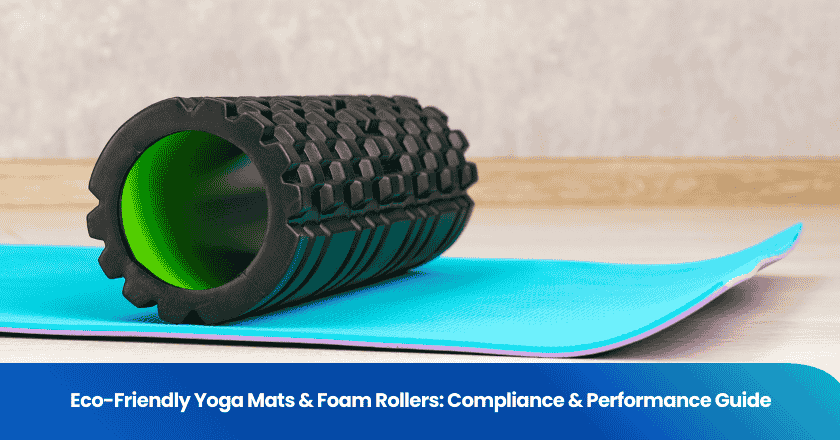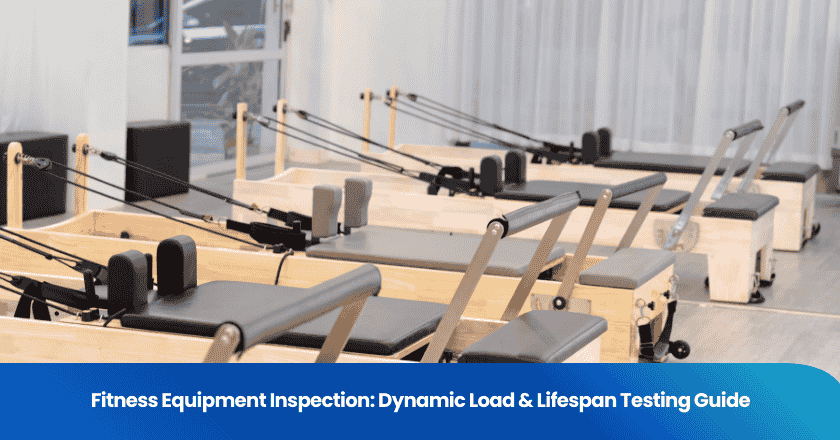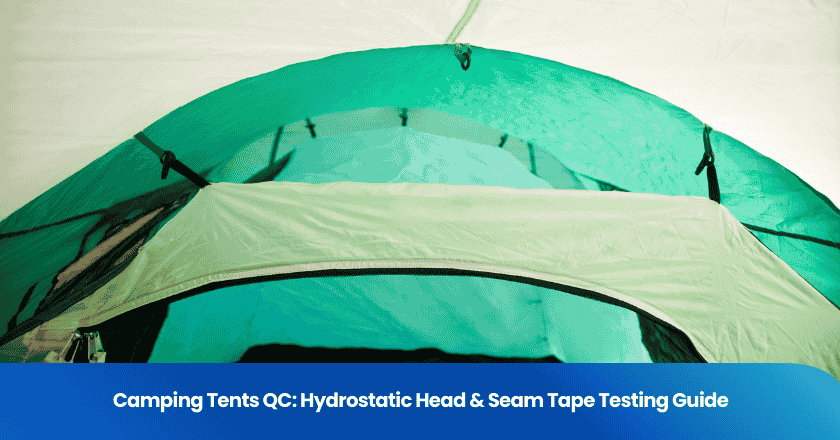
You encounter five essential inspection types in manufacturing: Pre-Production Inspection (PPI), During Production Inspection (DUPRO), Pre-Shipment Inspection (PSI), Final Random Inspection (FRI), and Container Loading Supervision (CLS). Matching each inspection to the right stage helps you prevent costly defects. Industry studies show that catching flaws early can reduce defect costs tenfold and AI-powered systems now spot issues invisible to the human eye.
Choosing the right quality control inspection method supports product reliability and business success. By understanding the 5 types of quality inspection and when to use them, you make informed decisions that protect your bottom line.
Key Takeaways
- Understand the five types of quality inspection: Pre-Production, During Production, Pre-Shipment, Final Random, and Container Loading. Each serves a unique purpose in ensuring product quality.
- Conduct Pre-Production Inspections to verify materials before manufacturing. This step prevents defects and ensures compliance with specifications.
- Use During Production Inspections to catch defects early in the manufacturing process. This helps maintain consistent quality and reduces costly rework.
- Implement Pre-Shipment Inspections to confirm that finished products meet quality standards before they leave the factory. This step protects your business from disputes and returns.
- Supervise Container Loading to ensure safe and compliant packing of goods. This reduces the risk of damage during transit and enhances customer satisfaction.
Overview of 5 types of quality inspection and when to use them
Quick List of Inspection Types
You encounter several inspection methods in manufacturing, each designed for a specific stage. Understanding the 5 types of quality inspection and when to use them helps you build a robust quality management system. Here is a quick overview:
| Inspection Type | Definition and Characteristics |
|---|---|
| Pre-Production Inspection | Assesses quality and quantity of materials and parts before production starts, ensuring correct specifications and factory preparedness. |
| During Production Inspection (DUPRO) | Conducted when 20% to 60% of production is complete, it evaluates consistency and identifies defects, ensuring corrective actions are effective. |
| Final Random Inspection (FRI) / Pre-Shipment Inspection (PSI) | Approves or rejects shipments before leaving the factory, verifying conformity to specifications and packaging. |
| Container Loading Supervision | Focuses on the packing and securing of goods in containers, checking quantity, packaging integrity, and loading methods to prevent damage during transit. |
You use quality control inspection at each stage to verify product quality and compliance. Each inspection type serves a unique purpose in your quality control inspections strategy.
Why Inspection Type Matters
Selecting the right inspection type at the correct stage is essential for effective quality control inspection. You prevent defects and maintain product quality by matching inspection methods to production phases. For example, pre-production inspection checks raw materials before manufacturing begins. During production inspection helps you spot mistakes early, reducing costly rework. Final random inspection and pre-shipment inspection confirm that finished products meet standards before shipping.
Quality control inspections verify that products meet requirements at different production stages. Early inspections like pre-production and DUPRO help you identify defects before they escalate. Pre-shipment inspections safeguard final product quality before goods leave the warehouse.
If you choose the wrong inspection type, you risk allowing defective products to reach customers. This can lead to recalls, damage your reputation, and result in lost revenue. Quality control inspection is integral to your quality management system, ensuring every product meets defined standards and customer expectations. By understanding the 5 types of quality inspection and when to use them, you protect your business and deliver reliable products.
Pre-Production Inspection (PPI)
Definition
Pre-Production Inspection (PPI) serves as your first line of defense in quality control inspection. You use this process to verify that all raw materials and components meet your requirements before production begins. International quality control organizations define PPI with these steps:
- Inspectors verify raw materials and components before production starts.
- They check for quality, quantity, and compliance with documentation such as Bills of Materials and engineering drawings.
- This stage often involves strength tests, expiry date verification, and contaminant checks.
- Effective incoming quality control at this stage prevents defective materials from entering the production line.
Key Features
You gain several advantages by conducting a pre-production inspection. PPI allows you to identify issues early, which helps you avoid costly delays and rework. You ensure that suppliers follow your specifications and that all materials are suitable for manufacturing. This inspection also supports your quality assurance inspection program by confirming that your production process starts with the right inputs.
Tip: Early detection of non-conforming materials reduces the risk of defects in finished products and strengthens your product quality from the very beginning.
Use Cases
Pre-Production Inspection applies across many industries, especially where safety and compliance matter most. The table below highlights common industries and typical outcomes:
| Industry | Typical Outcomes |
|---|---|
| Heavy machinery | Ensures equipment is in good working condition, reducing accident risks. |
| High-risk environments | Prevents severe consequences from equipment failure in construction and manufacturing. |
| Transportation | Ensures vehicles are roadworthy, enhancing public safety and reducing accident risks. |
| Overall Benefits | Enhances safety, reduces downtime, saves costs, and ensures regulatory compliance. |
You should use PPI when you want to prevent problems before they reach the production floor. This inspection is especially valuable if you require in-line inspection later in the process or if you operate in regulated industries. By starting with a thorough PPI, you set a strong foundation for consistent product quality.
During Production Inspection (DUPRO)
Definition
During Production Inspection (DUPRO) takes place when your manufacturing process is underway, typically after 20% to 60% of production is complete. You use this in-line inspection to monitor the assembly process, verify that standards are being met, and catch any issues before they affect the entire batch. DUPRO acts as a checkpoint, allowing you to make adjustments and maintain consistent product quality throughout the production run.
Key Features
You benefit from DUPRO by gaining real-time insights into your manufacturing process. This type of quality control inspection offers several important features:
- Dimensional accuracy verification and precise measurement
- Solder quality assessment on printed circuit boards
- Assembly error identification and component placement verification
- Surface inspection and surface quality evaluation for finish consistency and defect detection
- Fill level checks in pharmaceutical vials
- Contamination detection and foreign object identification
- Character recognition and barcode verification for traceability
- Continuous operation without breaks or fatigue
- High-speed data analysis for immediate decision-making
- Consistent inspection standards across all production runs
- Real-time defect detection to prevent faulty components from advancing
- Advanced technologies that help prevent expensive recalls and warranty claims
- Automation that ensures compliance without slowing operations
- Data generation that drives process improvements and enhances quality control
- Flexibility to adapt to different manufacturing requirements
Tip: By identifying defects early, you reduce the risk of costly rework and ensure that only high-quality products move forward in the process.
Use Cases
You find DUPRO valuable across many industries where maintaining high standards is critical. Common applications include:
- Aerospace industry: Automated visual inspection systems detect surface defects on plane equipment, supporting safety and performance.
- Home goods industry: Inspection systems check material quality and dimensional accuracy, helping you address issues in real time.
- Food and beverage industry: Inspections ensure proper labeling, packaging integrity, and contamination detection on production lines.
- Pharmaceutical industry: Automated inspections identify labeling errors and packaging defects, meeting strict regulatory standards.
DUPRO helps you maintain control over your production process, improve product quality, and meet customer expectations. When you implement this inspection, you strengthen your overall quality management system and reduce the likelihood of defects reaching the final stage.
Pre-Shipment Inspection (PSI)
Definition
Pre-shipment inspection stands as a critical step in your quality control inspection process. You conduct this systematic, on-site review when production reaches 80% to 100% completion. Inspectors select random units from all batches of your order. The goal is to confirm that your products meet the agreed-upon standards before shipment. This practice became standardized in international trade in 1994 under the General Agreement on Tariffs and Trade (GATT). You rely on PSI to serve as the final checkpoint, ensuring your production order aligns with customer requirements and regulatory expectations.
- Inspectors select samples from finished goods.
- They check for compliance with specifications and quality plans.
- PSI helps you avoid costly disputes and rejected shipments.
Key Features
You benefit from several key features when you implement pre-shipment inspection:
1. Factory visits allow you to address defects before shipping.
2. Quantity checks validate that your order matches the requested amount.
3. Statistical sampling ensures a fair and accurate assessment of product quality.
4. Visual inspections help you spot visible defects and assess appearance.
5. Safety tests confirm that products function correctly and meet safety standards.
6. Compliance checks verify that goods meet customer and regulatory requirements.
7. Inspectors use a pre-shipment inspection checklist to document findings and ensure all quality requirements are met.
Tip: Using a detailed checklist during PSI helps you maintain consistent product quality and reduces the risk of shipment delays.
Use Cases
You find pre-shipment inspection essential in several scenarios:
- Ensuring goods meet quality, quantity, and compliance standards before shipment.
- Verifying that shipments conform to contractual specifications, which reduces risks of defects, delays, and disputes.
- Navigating the complexities of international trade, where PSI services help streamline operations and safeguard your investments.
A pre-shipment inspection report gives you confidence that your products will satisfy customer expectations and regulatory demands. You protect your business reputation and minimize the risk of costly returns or rejections by using PSI as part of your quality control inspection strategy.
Final Random Inspection
Definition
Final random inspection stands as a crucial step in your quality control inspection process. You use this inspection after production finishes but before shipment leaves the factory. The process involves selecting random samples from the entire batch to ensure that the finished goods meet your requirements. Industry standards recognize final random inspection as a safeguard for both buyers and suppliers. You gain several benefits from this approach:
- Final random inspection is a critical step in quality control before shipment.
- It protects your business from defects and compliance issues.
- This inspection ensures accountability, preventing factories from cutting corners post-production.
- It reinforces trust for global buyers by matching approved products with delivered items.
- A failed inspection can uncover hidden issues in workmanship, labeling, or packaging.
- Ultimately, final random inspection provides confidence to approve shipments and release final payments.
Key Features
You will notice that final random inspection stands out from other inspection types due to its advanced features. The table below highlights what makes this inspection unique:
| Feature | Description |
|---|---|
| Technology Reliance | Uses advanced technologies like AI and IoT for accurate defect identification. |
| Standards Compliance | Follows international protocols such as ISO 9001, ensuring consistent and reliable inspections. |
| Methodologies | Applies specific methodologies that streamline operations and improve product quality. |
You benefit from these features because they help you detect even subtle defects and ensure your products meet global standards. This inspection gives you a final opportunity to verify that your goods are ready for delivery.
Tip: Always schedule your final random inspection after all production and packing are complete. This timing helps you catch last-minute issues and avoid costly returns.
Use Cases
You should use final random inspection when you want to confirm that your products meet all specifications before shipment. This inspection is especially valuable for international trade, where buyers and sellers may not share the same location. You also find it useful when you need to verify labeling, packaging, and overall product quality. Many industries, including electronics, textiles, and consumer goods, rely on this inspection to maintain high standards and protect their reputation.
Container Loading Supervision
Definition
Container Loading Supervision (CLS) plays a vital role in international logistics and quality assurance. You oversee the loading of goods into containers to guarantee safety, regulatory compliance, and fulfillment of contractual obligations. This process includes several inspection types, such as Container Loading Check (CLC) and Container Loading Inspection (CLI). You conduct these inspections before shipment to confirm that goods are loaded correctly and can be transported safely. By supervising the loading process, you reduce the risk of damage, loss, or non-compliance during transit.
Key Features
You benefit from several important features when you implement container loading supervision:
- Real-time monitoring tools track the loading process, allowing you to ensure compliance with regulations and address issues immediately.
- Proper lashing secures cargo inside containers, preventing movement that could cause damage during transport.
- Supervisors check container conditions, verify product counts, and inspect packaging integrity.
- Detailed documentation provides a clear record of the loading process, supporting claims and audits if needed.
Note: Effective container loading supervision strengthens your quality control inspection strategy and helps you maintain high product quality throughout the supply chain.
Use Cases
You find container loading supervision essential in many global supply chain scenarios:
1. You ensure compliance with international standards, reducing legal risks and avoiding costly delays.
2. You enhance cargo security and prevent damage, which leads to fewer claims and greater customer satisfaction.
3. You optimize loading efficiency, resulting in faster turnaround times and lower operational costs.
4. You support digital and automated loading processes by incorporating automation and IoT devices for better monitoring.
5. You facilitate risk management and insurance claims with thorough documentation, making claims resolution faster and reducing liability.
By supervising container loading, you protect your shipments, uphold product quality, and ensure your goods reach their destination safely and on time.
Comparison of Inspection Types
Summary Table
You need to understand how each type of quality control inspections fits into your production process. The table below summarizes the main features, timing, and best use cases for each inspection type:
| Inspection Type | Process Timing | Main Objective | Ideal Use Case |
|---|---|---|---|
| Pre-Production Inspection (PPI) | Before production | Verify materials, components, and readiness | New suppliers, critical materials |
| During Production Inspection (DUPRO) | 20-60% into production | Detect and correct defects early | Ongoing production, process monitoring |
| Final Random Inspection (FRI) / Pre-Shipment Inspection (PSI) | After production, before shipment | Ensure finished goods meet requirements | Export orders, customer specifications |
| Container Loading Supervision (CLS) | During loading | Secure and document proper loading | International shipping, fragile goods |
| Post-Delivery Inspection | After delivery | Confirm product quality at destination | High-value or sensitive shipments |
You see that each inspection type targets a specific stage. Pre-production inspection focuses on materials. During production inspection monitors the process. Final random inspection and pre-shipment inspection confirm finished goods. Container loading supervision protects your shipment during transit. Post-delivery inspection closes the loop by checking quality at the destination.
Choosing the Right Inspection
Selecting the right quality control inspections depends on your goals, risk level, and product type. Consider these factors:
1. Communicate your requirements to suppliers and request their own quality control inspections report for every batch.
2. Use random incoming quality control inspections for most products. For high-value components, consider a 100% inspection.
3. Implement in-line quality control inspections during production to catch defects early.
4. For finished goods, rely on random outgoing quality control inspections or full inspections if safety is critical.
5. When shipping, supervise container loading to prevent damage and loss.
Note: Budget, risk, and supplier reliability all influence your inspection strategy. High-risk products or new suppliers may require more frequent or thorough quality control inspections.
You should also match your sampling level to your needs. General Level II is standard for most quality control inspections. Use Level I for trusted suppliers or low-risk products. Choose Level III for high-risk items or when you have quality concerns.
Quality control inspections do not end at shipment. Post-delivery inspection helps you verify that products arrive in perfect condition and meet customer expectations. This step is especially important for sensitive or high-value shipments.
By understanding the strengths and timing of each quality control inspection, you can build a robust quality management system. You protect your business, reduce defects, and deliver consistent quality to your customers.
Choosing the right inspection type at each stage of production helps you prevent defects, reduce returns, and maintain customer satisfaction.
- First Article, in-process, and pre-shipment inspections all play a role in minimizing risks and ensuring compliance.
- Regular audits, data tracking, and automation further strengthen your quality control system.
If you feel uncertain, consult industry standards like ISO 9001 or seek expert advice. Effective inspection supports long-term business success.
FAQ
What is the difference between Pre-Production Inspection and During Production Inspection?
Pre-Production Inspection checks materials and components before manufacturing starts. During Production Inspection monitors the assembly process after production begins. You use both to catch defects early and maintain consistent quality.
When should you schedule a Final Random Inspection?
You should schedule Final Random Inspection after production finishes but before shipment leaves the factory. This step helps you verify product quality and compliance before approving delivery.
Why is Container Loading Supervision important?
Container Loading Supervision ensures goods are packed securely and loaded correctly. You reduce the risk of damage, loss, and non-compliance during transit by supervising this process.
Can you combine different inspection types in one project?
You can combine inspection types to strengthen your quality control strategy. For example, you may use Pre-Production, During Production, and Final Random Inspections for complex or high-value orders.
How does Post-Delivery Inspection add value?
Post-Delivery Inspection confirms product quality at the destination. You use this step to verify that shipments arrive in perfect condition and meet customer expectations.
Grow your business with TradeAider Service
Click the button below to directly enter the TradeAider Service System. The simple steps from booking and payment to receiving reports are easy to operate.




